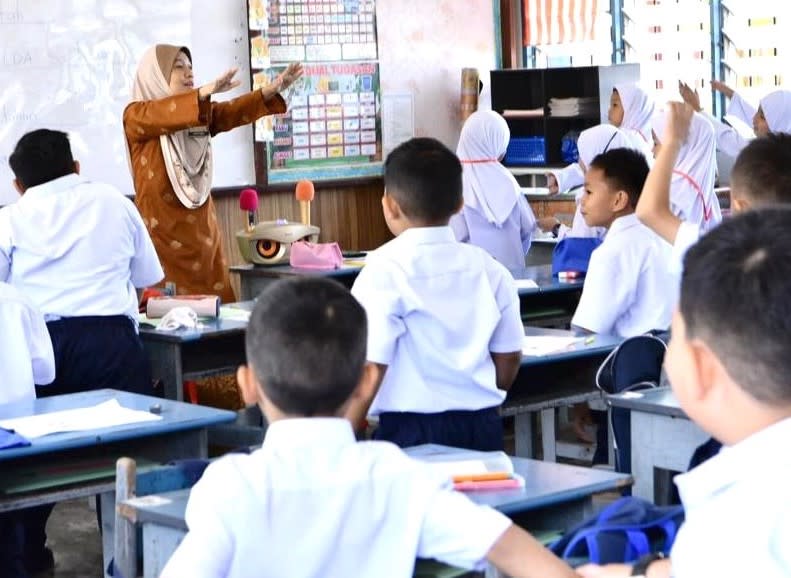Student dropout rates in Malaysia on downtrend, thanks to early intervention, effective strategies

The issue of dropout rates among school students requires a comprehensive approach for effective resolution.
According to deputy Education Minister Wong Kah Woh, the Education Ministry’s statistics showed that the dropout rate at the primary school level in 2023 decreased to 0.06 per cent, from 0.07 per cent recorded the previous year. At the secondary school level, the figure decreased to 0.83 per cent, from 0.99 per cent. These statistics indicate a positive trend of declining dropout rates over the years.
Several factors contribute to this achievement, including reform strategies in teaching and learning methods implemented by the ministry to narrow the education gap. These strategies include providing various forms of schooling assistance, such as Federal Small Scholarships (BKP), Supplementary Meal Plans (RMT), the Poor Student Trust Fund (KWAPM), Early School Assistance (BAP), Hostel Food Assistance (BMA), Hostel Student Travel and Transportation Assistance (PPM), uniform assistance (BPS), textbook loans, teacher guidance and counselling services, and rehabilitation teacher services.
Despite these improvements, Education Minister Fadhlina Sidek recently revealed in Parliament that over 435,000 students in primary and secondary schools are still facing dropout issues. While there has been progress, this number underscores the need for more effective and comprehensive actions.
The ministry has several initiatives, such as the Comprehensive Special Model School 9 (K9) and Comprehensive Schools 11 (K11) to support students, especially in rural areas, and to reduce dropout rates during the transition from Form 3 to Form 4. Additionally, the ministry established the Sekolah Bimbingan Jalinan Kasih (SBJK) in 2013 to provide education access to street, and marginalised children in Kuala Lumpur.
Collaboration with local communities and district education offices also plays a crucial role in outreach programmes for dropout students.
In March, the ministry introduced four steps through the Year One Student Curriculum Intervention to address dropout issues. These steps include the Primary School Standard Curriculum Alignment Document (KSSR) (Revision 2017) Edition 3, Early Detection of Literacy and Numeracy, Parent-friendly Classroom Assessment Reporting (CAB), and KSSR Alignment Document Upgrading (Revision 2017) Edition 3. These interventions aim to identify students who require early literacy and numeracy interventions tailored to their abilities and learning styles.
The mastery of literacy and numeracy skills, known as the 3M skills (reading, writing, and counting), is crucial in preventing dropout rates. Anuar Ahmad, a lecturer at the Centre for Education and Well-Being at Universiti Kebangsaan Malaysia, emphasised the importance of mastering these skills at an early stage to enhance students’ learning process and confidence, regardless of their socioeconomic background or geographical location.
Efforts to address dropout and improve 3M skills should primarily focus on preschool and primary school levels, as early intervention at these stages can mitigate issues at higher levels of education. Collaborations between the ministry and related agencies, such as the National Library of Malaysia (PNM) and the Malaysian Librarians Association (PPM), are essential for promoting literacy and providing educational support to communities, especially in rural areas.
PNM and PPM actively promote reading and literacy skills through initiatives like Rural Libraries and community-based learning assistance centres. By raising awareness about the importance of reading and libraries, these agencies complement the ministry’s efforts in addressing dropout issues and fostering a literate generation.
Addressing educational dropout rates requires a collective effort from various stakeholders, including parents, communities, and government agencies. By prioritising early intervention, implementing effective strategies, and fostering collaboration, Malaysia can work towards reducing dropout rates and ensure a brighter future for its students.
Dr Samsul Farid Samsuddin is the Deputy Director of the Ungku Aziz Centre of Development Studies (UAC), Universiti Malaya.
The views expressed here are the personal opinion of the writer and do not necessarily represent that of Twentytwo13.
The post Student dropout rates in Malaysia on downtrend, thanks to early intervention, effective strategies appeared first on Twentytwo13.


